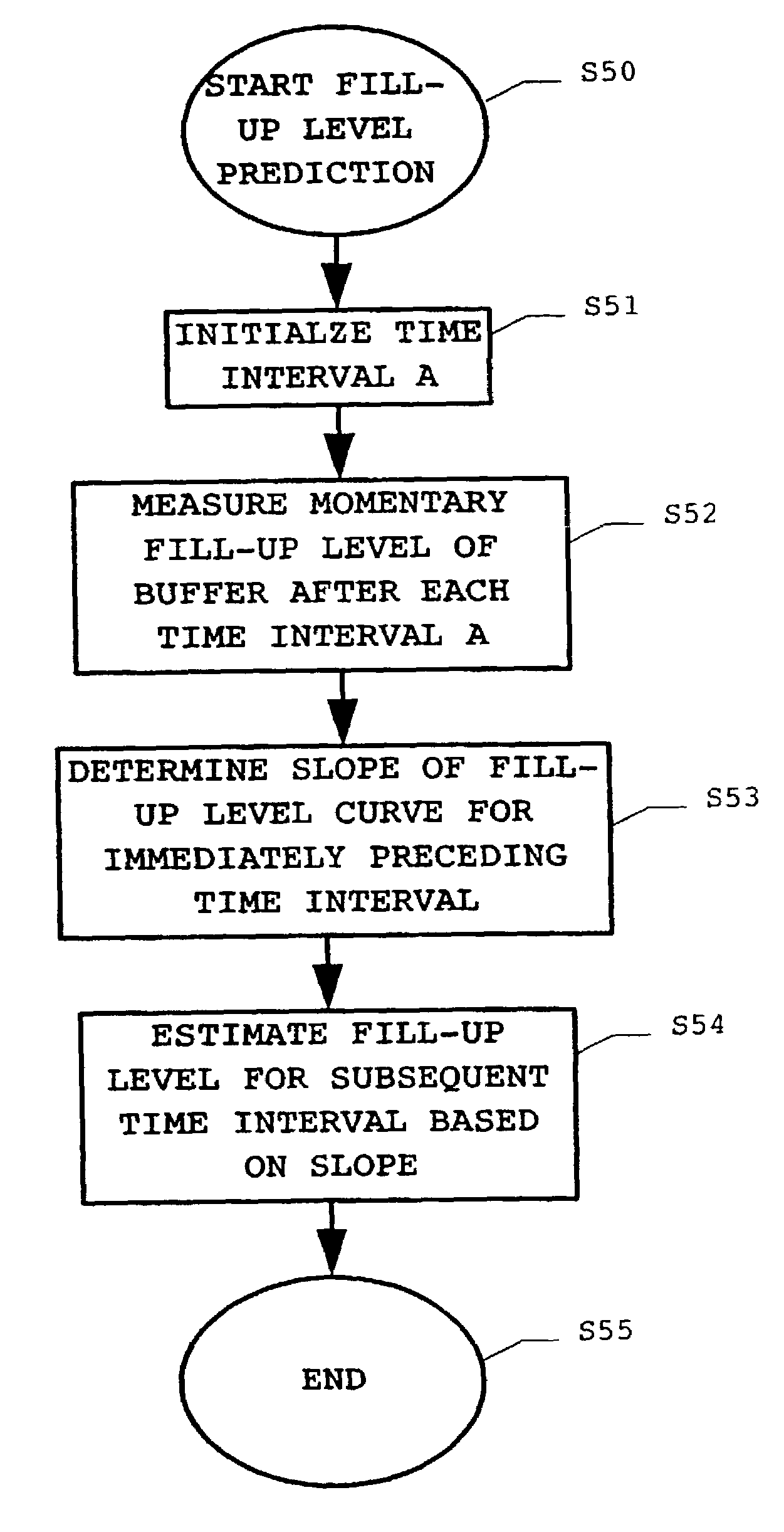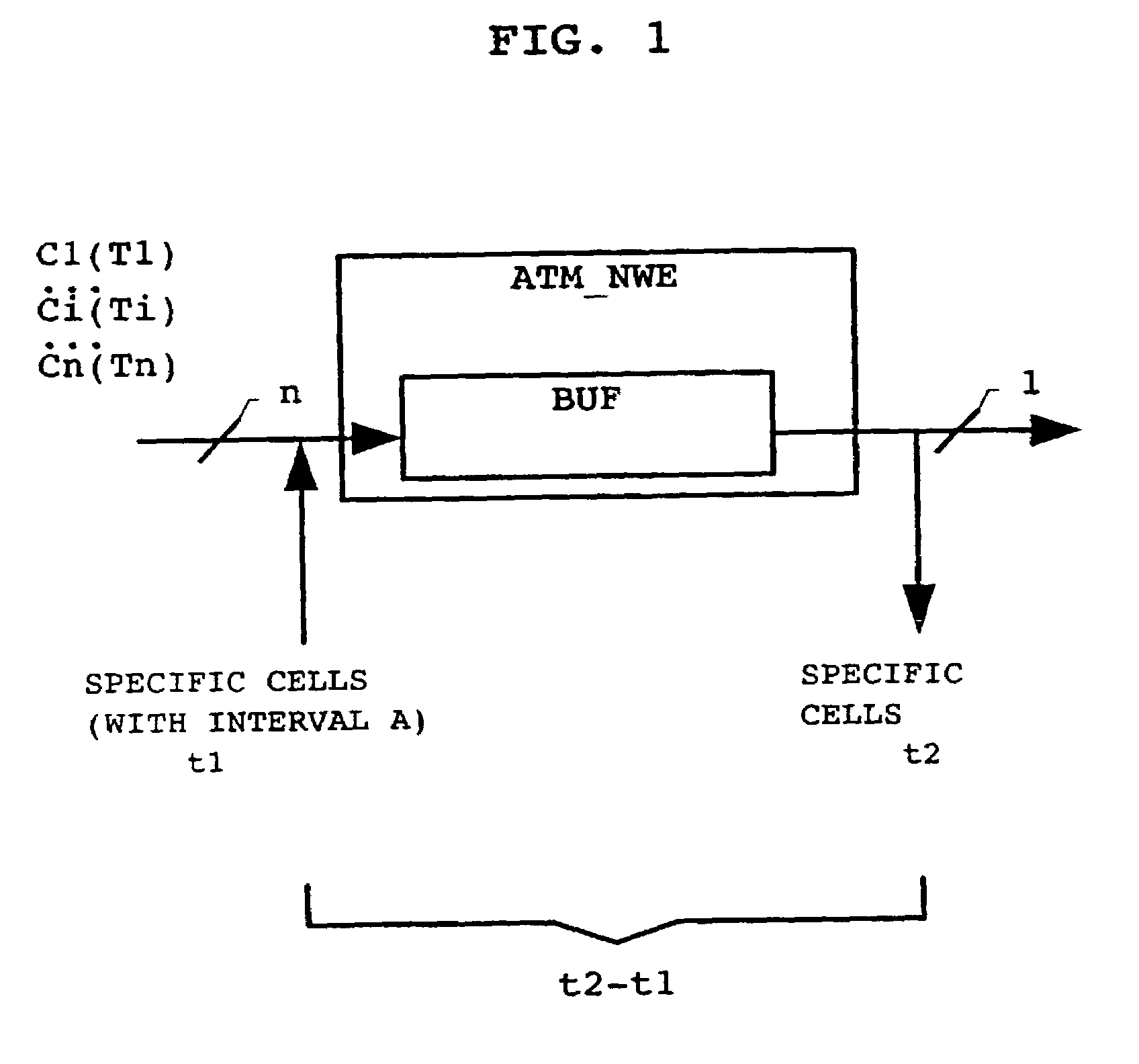Method for predicting a fill-up level of a buffer in an ATM network element
- Summary
- Abstract
- Description
- Claims
- Application Information
AI Technical Summary
Benefits of technology
Problems solved by technology
Method used
Image
Examples
Embodiment Construction
[0024]The present invention is now described in greater detail with reference to the drawings.
[0025]FIG. 1 shows a simplified and schematic block diagram of an ATM network element ATM_NWE with reference to which the principles of buffer delay measurements are subsequently explained. As illustrated, the ATM network element ATM_NWE is modeled as comprising a buffer BUF. The ATM network element is illustrated as handling a number n of ongoing transmission connections T1, . . . Ti, . . . , Tn, and for each connection cells C1, . . . , Ci, . . . , Cn are input to said ATM network element at respective (possibly different) input cell rates. At the output side, the ATM network element outputs a stream of ATM cells with a predetermined output cell rate.
[0026]In order to measure the buffer's fill-up level, one of the most reasonable methods resides in the use of specific cells. The specific cells are introduced into the cell stream at the input side of the ATM network element and are read at...
PUM
 Login to View More
Login to View More Abstract
Description
Claims
Application Information
 Login to View More
Login to View More - R&D
- Intellectual Property
- Life Sciences
- Materials
- Tech Scout
- Unparalleled Data Quality
- Higher Quality Content
- 60% Fewer Hallucinations
Browse by: Latest US Patents, China's latest patents, Technical Efficacy Thesaurus, Application Domain, Technology Topic, Popular Technical Reports.
© 2025 PatSnap. All rights reserved.Legal|Privacy policy|Modern Slavery Act Transparency Statement|Sitemap|About US| Contact US: help@patsnap.com



